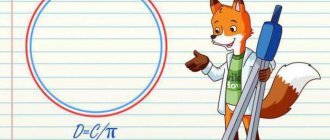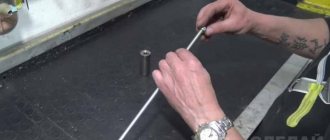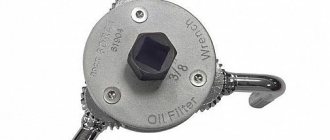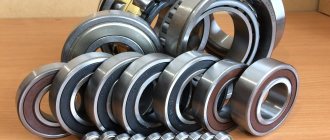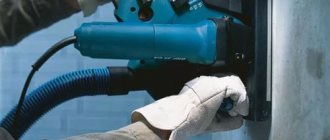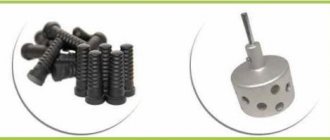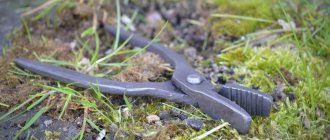In order to remove the bearing from its installation location, use a puller. It has grips with which the bearing is grabbed and pulled together by the force of the spindle.
Always keep in mind that the force must be applied to the bearing race that is installed with interference.
Pullers are either mechanical or hydraulic, depending on the type of spindle used. As a rule, if necessary, the spindle can be replaced with another one.
Range of bearing pullers
Types of pullers by type of grip
There are 4 main types available for different types of gripping and dismantling:
- External puller Designed for external dismantling, when the inner ring of the bearing is installed on the shaft, and the outer ring can be grabbed from the outside.
- Internal puller Designed for internal dismantling, where the outer race of the bearing is installed in the housing and the hole in the inner ring can be grasped from the inside.
- Separator puller Designed for dismantling with gripping the bearing from behind using a tension separator, when its rear part is adjacent to the surface and the external type is not suitable.
- Puller with grip between rings Designed for dismantling bearings that are installed simultaneously on the shaft and in the housing, and all other types are unsuitable.
With separator
They represent one of the most reliable designs. The basis is a separator, which is installed under the part being removed. Both halves are brought together using bolts to securely grip the part. Then a pulling part is connected to it, the side bolts of which are adjusted in accordance with the position of the separator halves, and the power bolt is inserted onto the fulcrum (usually the axis on which the part being removed is located). After installing the tool and tightening the power bolt, the part is dismantled.
The separator can also be used in combination with a sliding jaw puller. This requires some care to ensure the grips do not damage the threads of the cage bolts, but reduces the overall cost of the kit.
External bearing pullers
They work like this - the spindle tip rests on the shaft, and the claws cling to the outer ring.
To select the appropriate size external puller, you first need to determine the width and depth of the grip, and the required width of the grip jaws. Next, you need to evaluate the expected conditions of use in order to select its type.
If different grip depths and widths are required, you need a universal puller with movable parallel grips. The width is set by shifting the grips in the guides, and the depth by the axial position of the spindle. We offer tools with a working width range from 90...120 to 250...650 mm and a maximum working depth from 100 to 500 mm.
If the same operating conditions are expected, a puller with self-centering grips is suitable.
When different grip depths are planned, the best choice is a puller with articulated grips
For external gripping of bearings adjacent to the back of the surface, or if there is a risk of the jaws slipping, you should choose a puller with a side clamp that tightens the jaws together during operation.
Universal
This is the most common type of this instrument. Pullers are used to remove bearings, gears, pulleys, etc. The basis of the design is a power bolt, the rotation of which creates a dismantling force applied to a support point located on the unit being dismantled. Through the central body of the puller, this force is transmitted to the grippers that are in engagement with the part being dismantled. If the protrusions of the grippers are directed inward, then the puller is external. If you turn the grips with the protrusions outward, the tool becomes internal. Some models are combined, i.e. external/internal. Other models are not adapted to such a transformation and can be used only as external or only as internal; the basic principles of their operation do not change from this.
The suitability of a tool for performing any operation is determined by the following parameters:
- The maximum permissible load is determined both by the strength of the power bolt and the central body of the tool, and by the number of grips and the strength of an individual grip. The maximum permissible load may be specified by the manufacturer, but it is almost impossible to numerically estimate the force required to dismantle the part. For this reason, when choosing, they usually take into account only its compliance with the dimensions of the part being dismantled;
- The working stroke is determined by the reach of the power bolt, the length of the grips, as well as the location of the points of application of the dismantling force;
- The geometric dimensions of the grips, primarily the height of the stop and, to a lesser extent, the width of the stop;
- Maximum and minimum gripper opening.
The main difficulty in application is that the grips and stop points of the power bolt tend to move during operation. Many structures have various types of devices designed to counteract such displacement. However, these devices cannot be universal. While effective in one situation, they may be completely useless in another.
Internal bearing pullers
They allow you to grab the bearing by the hole in the inner ring and pull it out of the housing. When choosing, it is necessary to determine the diameter of the bearing bore and select the type of spacers - three-jaw, segment or for needle bearings. We offer pullers for hole diameters from 5 to 200 mm.
Next, if there is a supporting surface on the body for a stop, you need to choose a puller with a counter support and a spindle.
Otherwise, you need a puller with a reverse hammer.
Purpose and features of the device
If a hum or noise appears in the area of the car wheels that confuses you, this indicates that the wheel bearing has broken. It is not recommended to delay repair or replacement of this unit. If you are not a specialist in this field, then contact the nearest service station as soon as possible, where the car will be inspected and given a consultation.
However, it is not always possible to use the services of professionals; in some cases you have to act on your own. One of the most difficult repair operations is the dismantling of bearings. This requires special tools.
The most primitive wheel bearing puller is an item consisting of the following elements:
- metal rod;
- gripper arms (2 pieces) with ends curved inward.
The device has a movable connection and the gripping distance can be easily changed. The paws can be used to remove and fix the following:
- rings;
- ball bearings;
- gears.
If the tool has three gripping paws, then it has more possibilities, since the paws can be deployed and used to remove internal elements. It is called an internal bearing puller.
The most versatile device is the combined pressing tool, which has the properties of both a two-legged and a three-legged tool. Its design includes special clamps through which damaged particles can be easily removed.
Mounting and dismantling bearings requires applying manual pulling force to seat or remove one or another element. The success of your work, as well as your own safety, depends on how correctly you choose the tool.
Types of retaining rings
Retaining rings secure some car parts from longitudinal displacement, for example: CV joint on the axle shaft, bearing in the hub, etc. Retaining rings can work in both compression and tension (a more correct name is internal and external retaining rings) due to these forces they are held in the groove of the retaining ring. Accordingly, to remove the ring it must be either compressed or stretched.
Specifications
These tools differ in different parameters. So, according to the principle of activation, they are as follows:
- mechanical type internal bearing puller - it works by manual force and is designed to work with not particularly tight joints;
- Hydraulic bearing puller - used for hub devices and has a hydraulic drive, which helps to unscrew stuck particles and ease the operator’s efforts.
They have different devices and different operating ranges . They have two meanings:
- maximum working space width;
- maximum length.
The higher these indicators are for the front hub tool, the better it is. The working range can be different, for example, 185/225 mm or 290/380 mm and more.
Mechanical Bearing Pullers
Mechanical pullers are of the following types:
- internal;
- two-grip;
- three-grip.
Double-jaw tools are reliable and simple designs made from high-strength alloys through forging. It also ensures decent control over the entire work process.
They are used as wheel bearing pullers. Some modifications are designed for 1 diameter. They are more reliable because they have a monolithic design. But universal pullers are the most common and can be adjusted to any diameter. But this option has a slight backlash when performing a tightening force.
Three-grip options are more advanced in design and have three gripping arms. They are made from carbide tool steel by forging. They are used as bearing pullers on the front hub. The reliable gripping system allows them to also be used as generator bearing pullers.
Be sure to consider the build quality of its components when choosing a tool. In particular, there should be no unnatural play, and the hooks can be made at an angle to the base to properly secure the puller to the shaft.
Using internal pullers, ball or needle roller bearings are removed, as well as brass couplings of various shafts, crankshafts in particular. And similar pullers are needed for dismantling bushings and bearings with a tight fit.
There is another type of this tool - a special one, which is used for pressing out bearings of various automotive devices:
- generator;
- motor;
- cylinders and more.
These devices are manufactured to specific diameters and sizes, only this ensures their reliable operation.
Hydraulic pullers
The hydraulic method of installation or dismantling involves the use of special tools for seating or semi-automatic removal of bearing elements. Hydraulic traction is used here.
A hydraulic puller is a nut whose internal cavity presses on a special piston, which transmits forces to the part that is being removed or installed. Using this puller, you can remove wheel hub bearings from cars of different brands. It is also used as a puller for pulleys.
Hydraulic pullers are used for mounting and dismantling bearings of trucks and large vehicles. Their internal parts are quite massive, and human strength is limited.
How to work with a hydraulic device
To prepare the puller for work , you need to do the following:
- We check all its parts for serviceability. If there are cracks, deformations or signs of severe wear, it should not be used;
- accurately estimate the axial force required to remove the part from the shaft. If the force of the hydraulic cylinder is small, it cannot be used; select the option that is most suitable for this;
- operating temperature should be up to 45 degrees.
Then we proceed directly to the work itself:
- Place the grippers over the part to be removed. Screw the hydraulic cylinder of the puller into the nut with legs so that the end of the rod rests against the shaft with the part. The conical nozzle on the rod should fit into the centering hole of the shaft;
- screw the pressure release screw all the way;
- Using the handle, we pump oil from the tank into the hydraulic cylinder, and the rod should rest against the end of the shaft, and the part will move. When removing a part, you need to monitor the position of the working platforms of the paws relative to it so that they do not fall off;
- Depending on the model of the tool, the stroke of the rod should be 50−70 mm.
Many people are interested in how to properly maintain the tool and whether there are any guarantees for it from sellers and suppliers.
Thus, hydraulic oil will lose its properties over time and become contaminated. During operation, you may need to add oil or replace it entirely. Oil is added directly into the rubber container of the tank, located under the steel casing. To change the oil in the puller, the steel casing must be removed, then the oil is drained, but the rod cannot be pulled out. The working fluid is special hydraulic oil.
It is strictly forbidden to allow water to get on the tool, and its parts must be lubricated in a timely manner.
As for warranties, suppliers provide it for a period of 12 months from the date of purchase, but only if the consumer follows the rules for using the device as set out in the manual.
Suppliers accept all claims only if there is an instruction manual, as well as with a note on the date of purchase and the stamp of the company that carried out the sale.
Such warranty obligations do not apply to tools with mechanical damage caused by improper use, as well as attempts to repair them yourself, as well as if there is no oil in the tank or if the oil in the tank does not correspond to that recommended by the manufacturer.
Product quality must be controlled. Each instrument must undergo a series of special technical tests. Especially when it comes to hydraulic products. Such pullers can develop a force of 15 tons or more. Their production is controlled using special devices that carry out spectral and ultrasonic analyses.
What is a crosspiece puller and why is it needed?
A cardan shaft cross puller is a tool that is used to dismantle various parts and assemblies (pulleys, gears, bushings, wheels, couplings, bearings) that have an interference fit. This tool consists of two support plates, two ties, two nuts, two pieces of pipe and a bolt. As a rule, it is made of structural steel.
A driveshaft spider puller can effortlessly remove bearings from their forks without damaging adjacent parts. The puller can also act as a device for repairing a universal joint, since universal joints serve an average of 70-80 thousand km, during which time they wear out sufficiently and require replacement. In this case, the puller helps to extend the working life. In this case, you need to know that the spikes of the cross wear out more intensively only on one side. Therefore, when removing the hinge, it is necessary to make appropriate notes, wash and lubricate its parts, and then reassemble and install it, while rotating the cross 180°C around one of the axes relative to the previous position, in this case the main load during operation will fall on less worn side. As a result, such a hinge will last for more than one thousand kilometers.
Top 9. Ombra A90020
Rating (2021): 4.57
The most durable puller No welds, screws or rivets ensure a strong design and long service life.
- Characteristics
Average price: 648 rubles
- Country: Taiwan
- Type: end
- Working width: 68 mm
- Weight: 168 g
A high-quality puller for oil filters, which compares favorably with similar products due to its structural integrity. The tool is made in the form of a cup with a diameter of 68 mm - this size is most often found in engines of Korean and Japanese cars - Toyota, Honda, Kia and Hyundai. To use the puller, you will need a 3/8″ square wrench. Powder coating reliably protects the metal from corrosion and withstands various external influences quite well. The disadvantage of the tool can be considered only a limited scope of application. For those who purchase a puller for personal use, the problem loses its relevance.
Advantages and disadvantages
- Structural Integrity
- Protective covering
- Ease of use
- Limited scope
Top 3. AvtoDelo 40504
Rating (2021): 4.72
The most popular Affordable cost and ease of use make this puller the most popular tool.
- Characteristics
Average price: 350 rubles
- Country: China
- Type: crescent
- Working width: 65-110 mm
- Weight: 240 g
An easy-to-use tool, the working part of which is made in the form of a toothed, curved metal plate with a movable lip. This element is responsible for the reliable grip of the filter housing. For comfortable work there is a comfortable plastic handle. Thanks to the long length, the leverage of force is significantly increased, eliminating the need for rough physical impact. Please note that this model is not designed for difficult operating conditions. If you plan to regularly tear off massive stuck-on oil filters, it is better to look at another model. When performing work, you need to ensure cleanliness - if oil gets in, the handle becomes very slippery.
Advantages and disadvantages
- Low price
- Ease of use
- Big lever
- Adjustable working width
- Slippery handle
- For personal use only
Why does our car need a wheel bearing?
This element provides free rotation or rolling, depending on the part that it fixes. It also has a second function that it performs, which is reliable load absorption and stable transmission to other elements. If we consider this bearing, it is most often used in the construction of cars and trucks.
Both the front and rear wheel bearings can withstand enormous loads and are therefore highly durable. High pressure is exerted on them when braking or when accelerating while driving. The operating principle of this part is very simple: it ensures smooth rotation of the wheel around its axis. The rear and front bearings perform the same function, but the structure of the parts themselves differs from each other.

